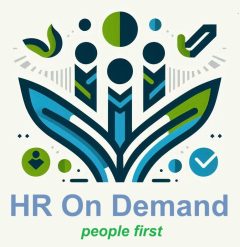Regulatory Compliance in HR: Navigating the Complexities
Managing regulatory compliance is one of the most significant challenges for small and medium-sized businesses. Laws and regulations are constantly evolving, and failure to comply can result in costly fines, lawsuits, or reputational damage. Below, we explore key aspects of HR compliance, the challenges businesses face, and practical solutions to keep your organization on the right side of the law.

1. Employment Law Basics
Understanding labor laws is foundational for compliance. These laws vary across jurisdictions and encompass hiring, wages, benefits, termination, and workplace conditions.
Key Areas to Address: | Regulation Type | Key Requirements | Risks of Non-Compliance | |————————|———————————|———————————–| | Minimum Wage Laws | Pay employees at or above the legal minimum wage. | Fines and employee lawsuits. | | Overtime Requirements | Compensate eligible employees for overtime hours worked. | Wage theft claims and penalties. | | Anti-Discrimination Laws | Ensure hiring practices and workplace policies are free of bias. | Discrimination lawsuits. |
SEO Keyword Phrase: “HR regulatory compliance guidelines”
2. Recordkeeping and Documentation
Accurate recordkeeping is a legal requirement in many areas of HR. Common documents include payroll records, employee contracts, and performance reviews.
Challenges:
- Managing digital and physical documentation securely.
- Ensuring compliance with retention periods (e.g., three years for payroll records in the U.S.).
Tips for Compliance:
- Use HR software tools to automate recordkeeping and securely store documents.
- Perform periodic audits to identify gaps in your documentation process.
3. Workplace Safety Regulations
Workplace safety compliance is governed by agencies like OSHA (Occupational Safety and Health Administration) in the U.S. Employers must create a safe working environment for their staff.
Common Safety Requirements:
- Conducting regular safety training sessions.
- Providing protective equipment and maintaining machinery.
Visual Chart: | Safety Compliance Checklist | Action Steps | |———————————-|————————————-| | Train employees on safety protocols. | Schedule regular training sessions. | | Assess workplace hazards. | Perform inspections quarterly. | | Report workplace incidents promptly. | File reports with relevant agencies. |
4. Employee Privacy and Data Security
With digital transformation, ensuring employee data security is now a compliance priority. HR departments must handle sensitive employee information responsibly.
Key Regulations:
- GDPR (General Data Protection Regulation) in Europe.
- CCPA (California Consumer Privacy Act) in the U.S.
Best Practices:
- Limit access to sensitive data using role-based permissions.
- Educate employees about secure data handling practices.
5. Compliance Training for Managers
Managers are often the frontline of ensuring compliance, yet many lack adequate training. Investing in compliance education can mitigate risks.
Training Topics to Cover:
- Recognizing and addressing workplace harassment.
- Understanding wage and hour laws.
- Preparing for audits and inspections.
6. Industry-Specific Compliance Needs
Certain industries face unique HR compliance challenges. For example:
- Healthcare: Strict patient privacy laws impact how HR handles employee medical records.
- Manufacturing: Workplace safety regulations are more stringent due to higher risks.
Regulatory Compliance Challenges and Solutions
| Challenge |
Solution |
| Keeping up with changing regulations |
Subscribe to legal and HR newsletters for updates. |
| Limited resources for compliance management |
Invest in HR tech tools for automation and accuracy. |


